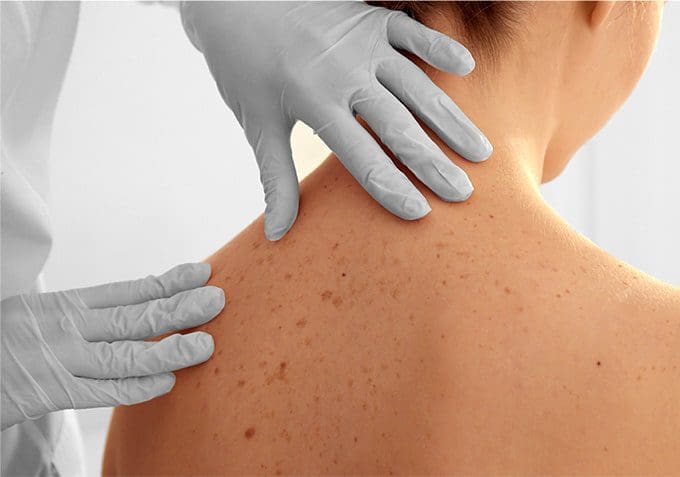words Alexa Wang
Scars can have a different appearance depending on the person. They can have different colours, sizes, and textures. And for most people, scars end up either completely disappearing or becoming less apparent with time.
But for a small percentage of the population, these scars can grow excessively large, darker in colour, and raised. These are what are called keloids, and can be an inconvenience for many, especially when they appear on areas like the neck, hand, or face. Let’s take a closer look at what causes keloids and what can be done about them.

What are keloids exactly?
Keloids are a form of scar and appear as a result of an excessive response by your body to injury. These tend to be more common in people with more pigmentation. These also tend to be more common among people under 30, pregnant women, and people with a history of keloids in their family.
What happens when you usually get a scar is that the body will start forming collagen cells that will be sent to the site of injury. In normal people, this cell production stops once the scar has healed completely. But with keloid prone people, the collagen cell production doesn’t stop and the wound continues to grow more scar tissue, which causes it to look elevated.
Though a lot of people want to get rid of keloids for aesthetic reasons, these are not the only ones. In some cases, keloids can cause tightness, discomfort, or could even end up limiting the patient’s range of motion, such as when the keloids appear around a joint, like an ankle or knee for instance. Large keloids can also end up rubbing on the body, which causes further discomfort and itching.
Keloids are not always easy to treat, but there are some advancements in technology that increase the rate of success.
What are Some of the Causes for Keloids
Know that many types of scars, even minor ones, can end up forming a keloid. One of the reasons you might get keloids is as a result of cutting yourself during shaving for instance. Burn scars can also form keloids. Other reasons that can cause them include incisions from injuries, diseases that can scar the skin like chickenpox, or even something as minor as an insect bite.
Know however that some keloids can start forming out of the blue for no apparent reason. Or they might start forming years after a scar has formed.

What Can be Done About them?
Well, there are actually many treatments you could seek to remove keloid scars. The first thing you should do is talk with a specialist keloid scar removal clinic and see what they can do. For instance, there’s The Dermatology Clinic in London who provide this treatment to patients. They will usually offer multiple keloid scar removal techniques such as corticosteroid injections or a surgical removal.
Corticosteroid injections are usually the best choice if this is your first time getting keloids. What they do is stop the production of collagen in the scar, which then makes it look flatter and smaller in appearance. Triamcinolone is usually the medication used in this procedure and it will be injected directly in the most fleshy part of the scar. Also note that you may have to undergo multiple procedures before you get desired results.
Surgical removal is also an option, but isn’t for everyone. In most cases, this is only a good option if you don’t have a history of developing keloids in your family and it’s your only one. That’s because the procedure won’t be able to prevent keloids from forming in the future.
Things you shouldn’t do when you have keloids
There are also some precautions you should take if you are prone to keloids to make sure that you don’t end up aggravating the situation. For instance, most over the counter acne treatments are too harsh for your skin, as people who are prone to keloids usually have sensitive skin. The same thing goes for laser treatments for removal. While many doctors will recommend it, it’s always better to look at other alternatives for the same reason.
Also, if you’re into piercings, then you’ll have to reconsider if you are likely to form keloids. Even something as benign as having your ears pierced could end up in a keloid in that specific area. The same goes with tattoos. Anything that puts your skin under unnecessary stress risks forming some keloids, so avoid tattoos at any cost.
Also, if you were thinking about going for surgery for anything, it’s very important that your doctor is aware of you condition too. Things like stitches could trigger keloid formation.
Conclusion
Keloids can be unsightly and uncomfortable, but that doesn’t mean you have to live with them. Make sure that you speak with a dermatologist today and see what they can do for you.










